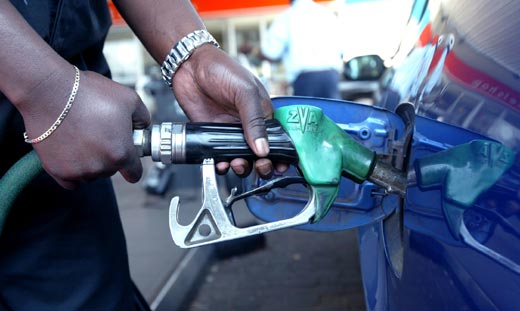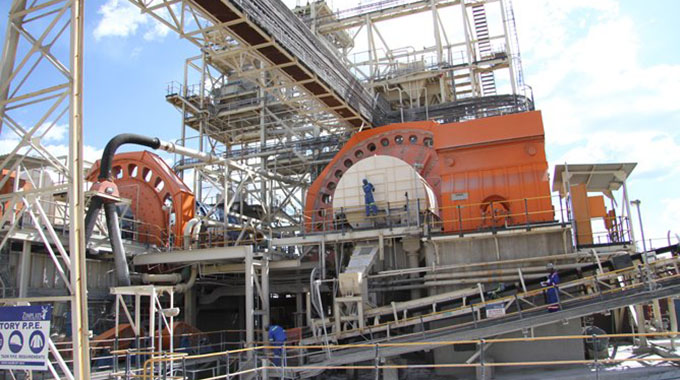Zim best investment destination: Implats
South Africa’s Impala Platinum Holdings (Implats) has described Zimbabwe as the best investment jurisdiction due to its predictable and supportive operating environment, which has allowed its investments to thrive without disruption.
Implats chief executive, Mr Nico Muller, speaking at the Johannesburg Mining Indaba, said while others saw Zimbabwe as risky, the group continued to expand its operations. “Zimbabwe is the best jurisdiction to operate in; predictable operating environment, least disruption, best safety record, I’m happy that others see Zimbabwe as a risk. It allows us to continue expanding our interest there.”
He also pointed to the favourable level of support and co-operation from the Zimbabwe Government, adding; “… we have been able to navigate the foreign currency situation without a single hiccup. We have been able to extract all of our dividends declared.” Mr Muller cited the example of the official opening of a “small regional hospital” built by Zimplats in the country to illustrate the level of Government interest and support.
“I attended along with the CEO of Zimplats. The President (Cde Mnangagwa) of the country was there along with five ministers. That’s the way in which Zimbabwe thanks a mining company. But in South Africa, where we have opened something ten times the size, we get pelted with apples and oranges because we are not doing enough”.
Implats is a South African holding company that owns several mining assets, which produce platinum and platinum group metals, as well as nickel, copper and cobalt. In Zimbabwe, the group holds significant assets namely Zimplats, its 87 percent-owned unit and Mimosa, an associate it owns on a 50-50 basis with fellow South African mining group, Sibanye Stillwater.
Zimplats is the country’s biggest platinum producer. Early this year, the Implats board approved new capital investment worth US$1,8 billion in Zimbabwe, with US$1,2 billion already committed for implementation.
The investment, spread out over the next 10 years, starting in 2021 and involves the development of a new mine, expanding processing capacity and measures to cut carbon emissions.
At Mimosa, in the six months to December 31, 2021 the group invested US$40 million on capital projects aimed at expanding mine life and production capacity.
Speaking at the indaba, Tharisa Capital chief executive, Phoevos Pouroulis, said the company was set for increased activity in Zimbabwe after increasing its stake in Karo Resources platinum project.
“We believe there are a multitude of synergies on the Great Dyke, we’re open to conversations about collaboration as we become more active.”
Tharisa recently said that it would invest US$250 million to complete phase 1 of the Karo project in Zimbabwe in the next 24 months after raising its shareholding in the project. The group exercised its option and increased its stake in Karo Mining to 66,3 percent from 26,8 percent, funding this through the issuance of new shares valued at US$27 million.
According to Mr Pouroulis, the first phase of the project entails developing an open-pit mine with a 20-year life-of-mine and capacity to produce 150 000 ounces of platinum and platinum group metals per year.
Zimbabwe launched the strategic road to the achievement of $12 billion by 2023 in October 2019 as part of the broader macroeconomic roadmap towards an attainment of an upper middle-income economy by 2030.
Both Government and private sector players in the mining sector have been resolute in their commitments towards achieving the US$12 billion mining industry by 2023.
The multi-billion-dollar mining industry is expected to be driven by gold, platinum, diamond, chrome, iron ore, coal, lithium and other minerals.
This year, the mining sector is estimated to contribute 8 percent to Zimbabwe’s gross domestic product, as the country continues to leverage its mineral resources to transform the economy and uplift the citizenry.
Another platinum project, Bravura Consortium, is targeting to finish the first phase of platinum exploration by February 2021, which will confirm the size of the ore body in order to move to the next stage.
The Bravura Consortium is a multi-national mining house registered in the Republic of Dominica, and is domiciled in Ghana, with subsidiaries in Nigeria, DRC, Guinea and Zimbabwe.
In the 2022 National Budget, the Mines and Mining Development Ministry was allocated $3 billion to drive implementation of a number of programmes and activities which will assist the mining sector to attain its desired growth by 2023.
According to Chamber of Mines of Zimbabwe president Colin Chibafa, the private sector is prepared to work closely with the Government to resolve all matters that weigh down the performance of the mining industry.
Through the 2023 mining sector vision policy document, the Government is focusing on “value addition, enhanced investment within the sector, increased productivity and employment creation and increased exports and foreign-currency generation.
As part of a broader expansion programme, RioZim Murowa, a subsidiary of RioZim, announced plans to commission a processing plant this year at its Murowa diamond mine, located in Mazvihwa, south central Zimbabwe that is expected to double its production capacity.-The Herald










